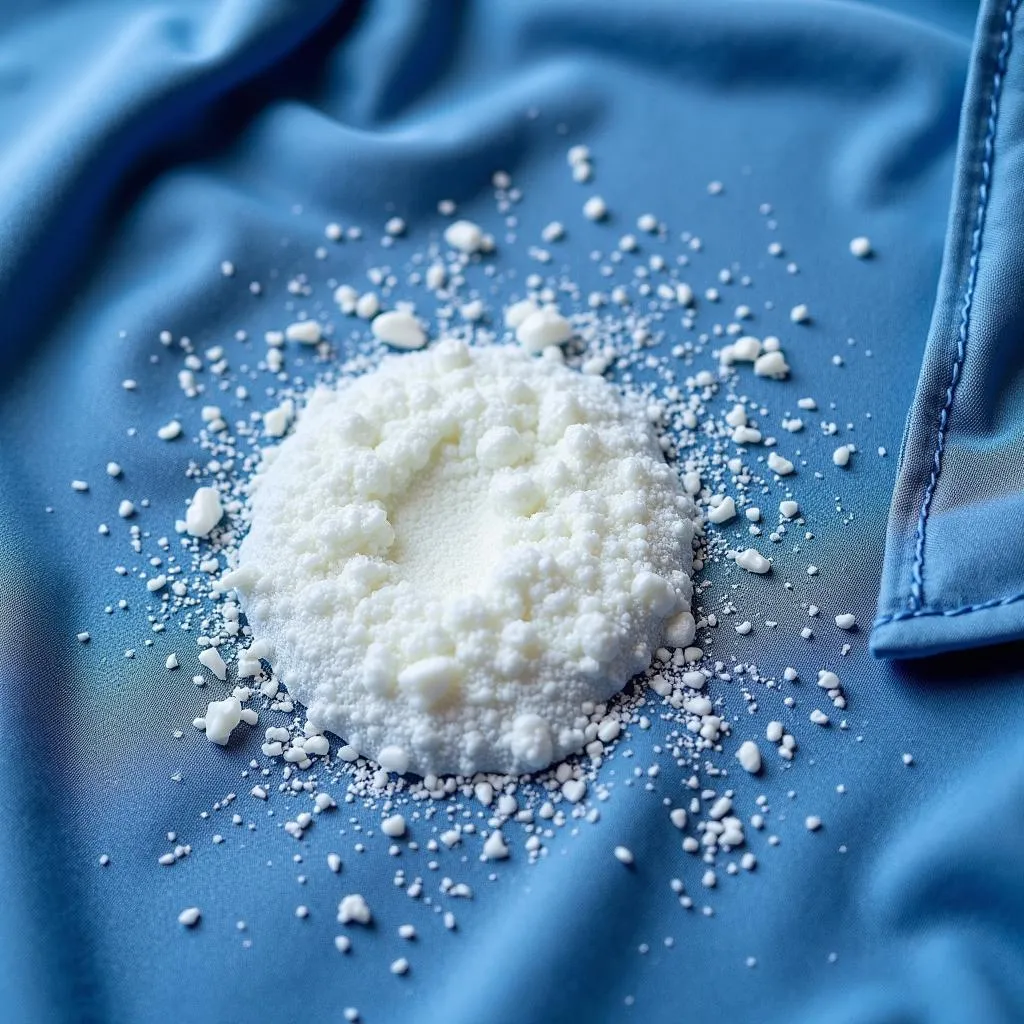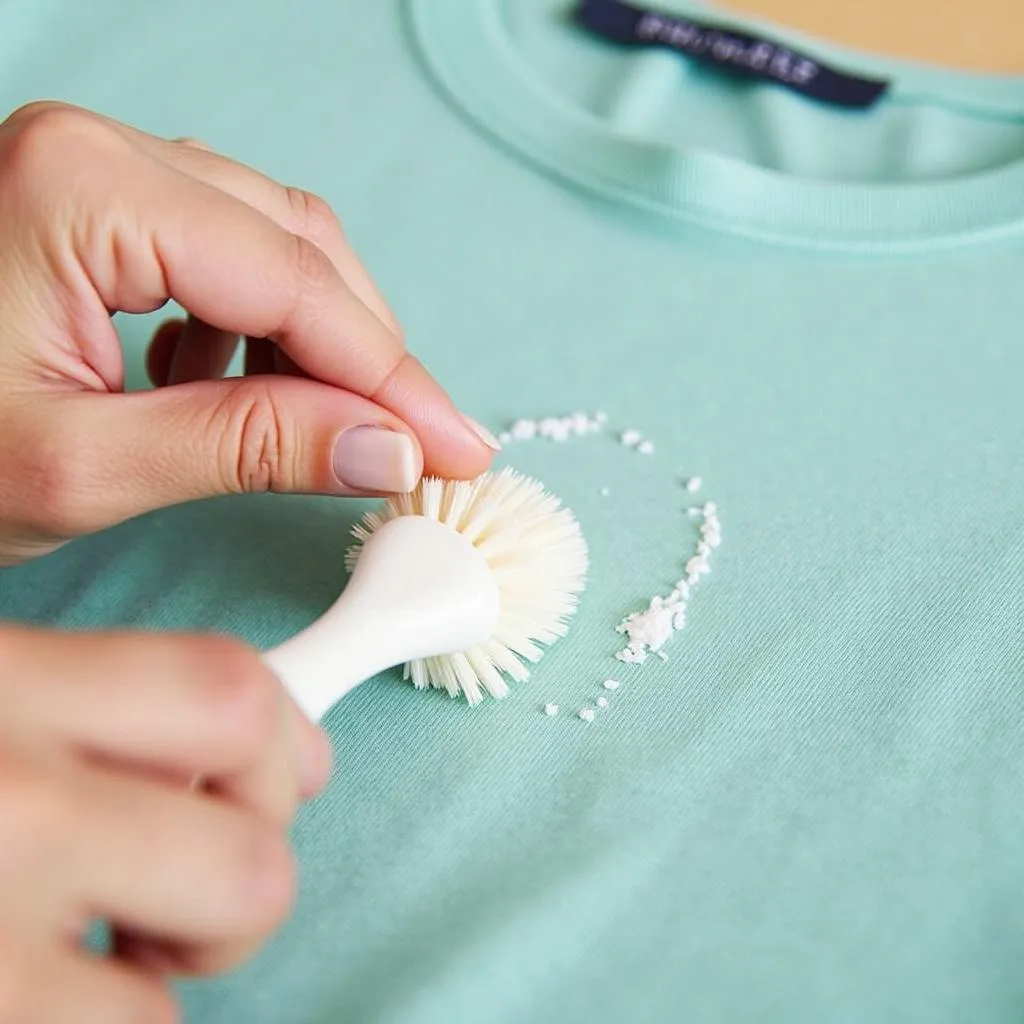Deodorant buildup on colored shirts is a common laundry woe. It’s unsightly, potentially damaging to the fabric, and can make your favorite shirts look old and dingy. But don’t despair! This guide will walk you through proven methods to banish those stubborn white marks and keep your colored shirts looking their best.
Understanding Deodorant Buildup
Before we dive into the removal process, it’s helpful to understand what causes deodorant buildup. The white marks are primarily a combination of:
- Aluminum salts: Found in most antiperspirants, aluminum salts work by blocking sweat ducts. When these salts mix with sweat and your shirt’s fabric, they can leave behind a white residue.
- Body oils and skin cells: Deodorant also mixes with your body’s natural oils and shed skin cells, contributing to the buildup.
- Fabric softeners and dryer sheets: While intended to make clothes soft, these laundry products can sometimes leave a waxy residue that traps deodorant and contributes to buildup.
 Close up of white deodorant buildup on a blue shirt
Close up of white deodorant buildup on a blue shirt
Effective Methods for Removing Deodorant Buildup
Here are some of the most effective techniques for tackling deodorant stains on your colored garments:
1. Act Fast
Fresh stains are always easier to remove. If possible, try to address deodorant marks before they have a chance to set into the fabric.
2. Vinegar Soak
White vinegar is a natural cleaning powerhouse. Soaking your shirt in a vinegar solution can help break down deodorant buildup:
- Fill a basin or sink with cool water.
- Add one cup of white vinegar.
- Submerge the stained garment and let it soak for at least 30 minutes, or up to a few hours for stubborn stains.
- Rinse the garment thoroughly with cool water.
- Launder as usual.
3. Baking Soda Paste
Baking soda is another natural cleaning agent that can effectively combat deodorant stains:
- Create a paste by mixing baking soda with a small amount of water.
- Apply the paste directly to the deodorant stains.
- Gently rub the paste into the fabric using your fingers or a soft-bristled brush.
- Let the paste sit for 15-20 minutes.
- Rinse the paste away with cool water.
- Launder as usual.
 Person applying baking soda paste to a deodorant stain
Person applying baking soda paste to a deodorant stain
4. Aspirin Power
Believe it or not, aspirin can be surprisingly effective at removing deodorant stains:
- Crush two to three aspirin tablets into a fine powder.
- Mix the powder with a small amount of warm water to form a paste.
- Apply the paste to the deodorant marks and let it sit for at least one hour.
- Rinse the paste away with cool water.
- Launder the garment as you normally would.
5. Dish Soap and Hydrogen Peroxide
For particularly stubborn deodorant stains, you can try using a combination of dish soap and hydrogen peroxide:
- In a small bowl, mix one part dish soap (a clear variety works best) with two parts hydrogen peroxide.
- Apply the mixture directly to the deodorant marks.
- Use your fingers or a soft-bristled brush to gently work the solution into the fabric.
- Let the mixture sit for at least 30 minutes.
- Rinse the garment thoroughly with cool water.
- Launder as usual.
Important: Always test any cleaning solution on a hidden area of your garment first to check for colorfastness.
Preventing Future Buildup
Prevention is always easier than cure. Here are some tips to minimize future deodorant buildup:
- Let deodorant dry completely: Allow your deodorant to dry fully before getting dressed. This prevents it from immediately transferring to your clothes.
- Choose aluminum-free deodorants: Aluminum-free deodorants are less likely to leave behind white marks.
- Avoid fabric softeners and dryer sheets: As mentioned earlier, these products can contribute to buildup. Opt for dryer balls or air-drying when possible.
- Address stains promptly: The sooner you address deodorant marks, the easier they are to remove.
 A woman hangs laundry to dry on a clothesline
A woman hangs laundry to dry on a clothesline
Conclusion
Dealing with deodorant buildup on colored shirts doesn’t have to be a chore. By understanding the causes and employing these effective removal methods, you can keep your favorite shirts looking their best. Remember to act fast, test cleaning solutions in a hidden area, and embrace preventive measures to minimize future buildup. With a little effort, you can keep your colored shirts vibrant and stain-free.

